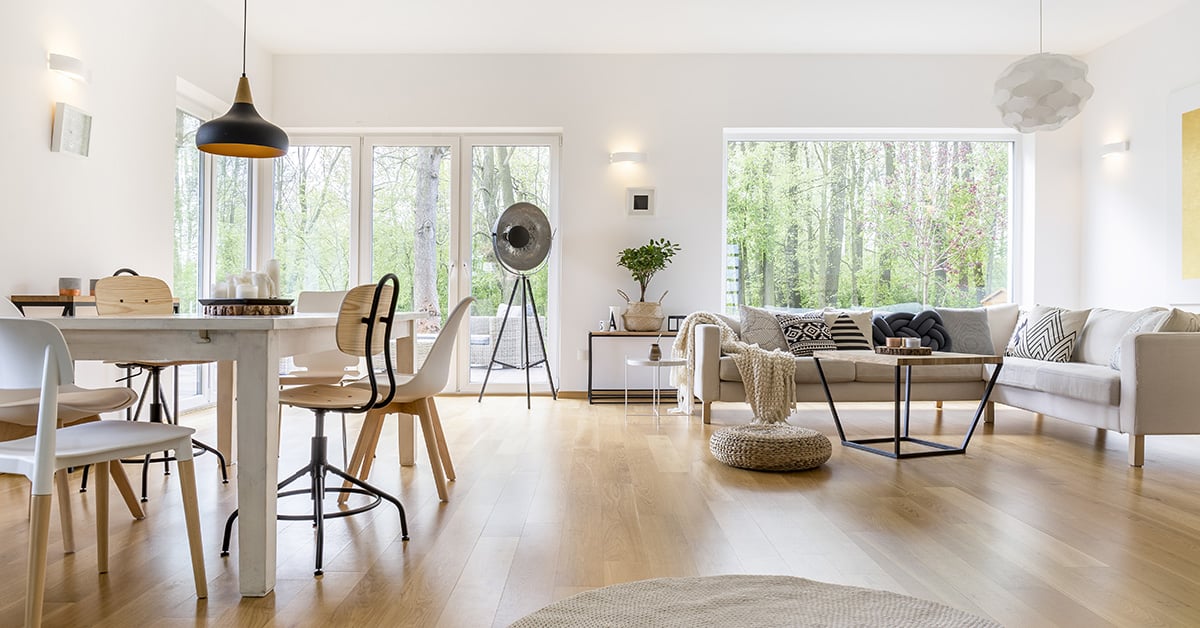How to Save Money on Your Electric Bill All Year Round

It’s hard not to feel anxious when the electricity bill arrives. Even if you have tried to be vigilant about your power usage, the amount due can make a huge and unexpected dent in your budget.
The good news is some simple strategies that can be adopted year-round to reduce your power bill – and this doesn’t have to mean wearing a beanie indoors during winter or giving away your tumble dryer.
To help save money, we’ve compiled some practical tips and suggestions that will cut costs throughout every season without sacrificing comfort or lifestyle.
1. Upgrade to be more energy-efficient
Did you know that even when you are not using an appliance it still uses energy in ‘standby mode’? While switching it off at the plug each evening will make a saving, this isn’t always practical.
Another idea is to replace old appliances with new energy-efficient models. Cheaper models may be more affordable to purchase, however, could ultimately end up costing you more because they have higher energy usage.
Australia’s Energy Rating Labels provide useful information to consumers on how best to reduce energy use, cut emissions and save money. Regulated by the Australian Government, the scheme has been running for more than 30 years. Look for more stars on their label, for more long-term savings on your electricity bill.
Investing in solar is another way to reduce energy costs. Panels installed on your roof generate electricity captured by the sun. Any excess energy produced is fed back to the grid and you’ll find a credit on your next power bill.
Importantly, such a system can also add value to your home. Talk to your local LJ Hooker agent about whether going solar will resonate with buyers and tenants in your area.
2. Check out your hot water
Who doesn’t love taking a long hot shower? This can, however, be a costly indulgence.
According to Origin Energy, hot water heating makes up almost 21 per cent of every household’s electricity bill. And most of the hot water consumption is used by showering.
An average modern showerhead uses around nine litres of water per minute, with hot water accounting for 40 per cent of it. During an eight-minute shower, you are churning through around 29 litres of hot water. So, one of the easiest ways to reduce your electricity bill is to simply take shorter showers. If you tend to shower for 15 minutes or longer, consider a bath instead.
Check that your hot water taps are not leaking as this is simply throwing money down the drain.
3. Install insulation
Installing insulation batts in the rafters of your roof and wall cavities will protect your home throughout the entire year, by keeping it cooler in summer and warmer in winter.
If you are looking to cut energy costs, chose batts with a higher rating. And while these can be pricey to install, they significantly reduce your energy consumption. The Building Code of Australia requires R4-rated insulation batts to be used in new homes as a minimum standard. The ‘R’ refers to the thermal resistance rating. Insulation batts can also help prevent damp air from entering your home.
4. Look for other ways to add insulation
Curtains are a cost-effective way to minimise your energy usage all year round. They stop cool air coming in during winter and help to block the heat during summer.
Thermal-backed curtains are even more effective as these have an acrylic coating adding to their insulation. Blockout curtains, typically made from thicker material, produce a similar result – the upside is they can even help you to sleep better.
Rugs look great in a living room but they also serve a function by adding another layer of insulation. It is a cheap way to make your home feel extra cosy during the cooler months.
Underfloor heating is not just a luxury, it is an energy-efficient way of heating a home. It creates a warmer environment from the floor upwards – and your feet will love it in winter!
5. Seal any draughts
Broken, cracked or misaligned doors and windows are often the culprit for letting in draughts. They can account for up to 20 per cent of heat loss in your home, so seal up any gaps or cracks in walls.
Draughts can also easily be fixed with a sand-filled door snake, available at hardware stores.
Remember it is mandatory for all flueless gas appliances to have fixed ventilation to operate safely. Never block the ventilation openings for a flueless or open-flued gas heater.
Upgrading to double-glazed windows is expensive but a smart investment for those looking to save on electric bills all year round. It works by preventing heat from transferring from one side of the glass to the other. This keeps hot weather out in summer and stops warm air from escaping in winter.
Double-glazed windows reduce outside noise which is another bonus.
6. Sort out your heating and cooling
Try to resist turning on the heater except for in the morning and evening when the temperature dips. If using an air-conditioner to warm the air, you can reduce your running costs by dropping the thermostat a degree or two.
If looking to upgrade your heating systems, consult an expert who will factor in the size and shape of your room. They can also advise whether to go with a gas, electricity or wood-burning fireplace.
During summer, turn your air-conditioner off overnight to reduce your electric bill or use it only on very hot days. Ceiling fans cost only a few cents to run per hour and are a smart investment.
7. Utilise natural lighting
Harnessing natural sunlight reduces the need to switch on lights during the daytime while also saving on heating. Adding a skylight will brighten up an interior and if installed properly, it won’t let warm air escape.
Likewise, painting walls white also reflect light and will keep your interior brighter. You’ll find more tips on maximising natural light here.
While it is tempting to pile full loads of wet washing into the clothes dryer, this can make your energy cost skyrocket. Make the most of sunny days and peg your laundry out on the line for fresher clean clothes – this costs nothing except for your own effort.
Be sure, to practice other energy-efficient habits throughout the year to save money on your electric bill. This includes turning off lights when leaving a room, washing clothes in cold water, putting on a jumper when it is cold and air-drying dishes.
DISCLAIMER - The information provided is for guidance and informational purposes only and does not replace independent business, legal and financial advice which we strongly recommend. Whilst the information is considered true and correct at the date of publication, changes in circumstances after the time of publication may impact the accuracy of the information provided. LJ Hooker will not accept responsibility or liability for any reliance on the blog information, including but not limited to, the accuracy, currency or completeness of any information or links.
Share


